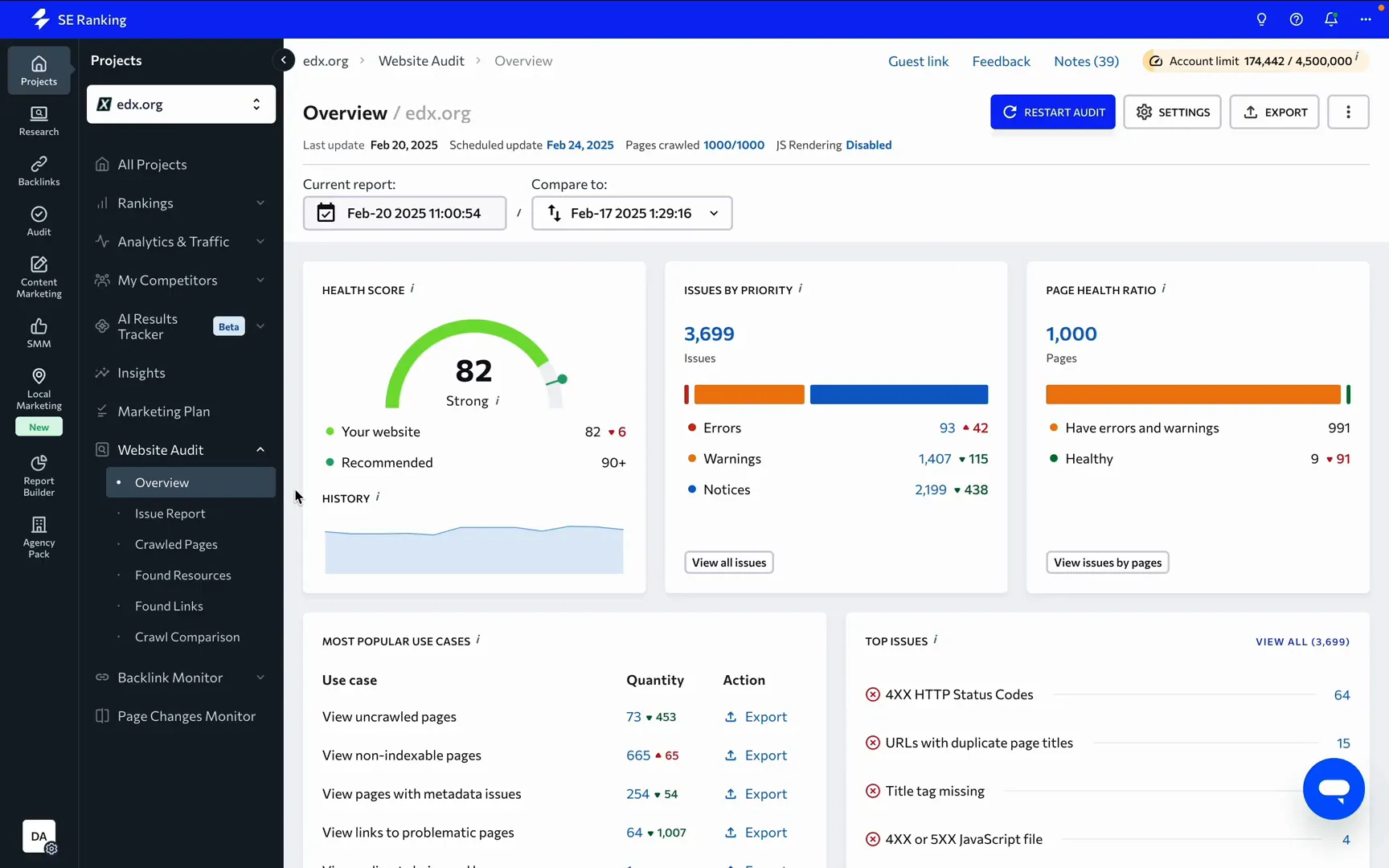TL;DR ChatGPT lit a fire under Google, but it didn’t kill it. Focus 80–90% on Google’s ecosystem, invest in answer engine optimization (AEO), and diversify to key AI and social platforms for retrieval-driven visibility.
When ChatGPT arrived in late 2022 it sparked one of the biggest debates in search: is Google at risk? I watched the landscape evolve over three years and tested how AI chat and retrieval affect SEO. Here’s my read as a marketing strategist and agency owner—what worked, what didn’t, and exactly what I’d do next.
Table of Contents
- What I tested and why it matters
- What went right
- What went wrong
- Here’s what I would’ve done differently
- Two new games every marketer must play
- Practical tactics to influence AI answers
- What to measure right now
- Strategic checklist: what I’d implement this quarter
- Will Google still be dominant if chat AIs grow?
- How can I influence AI-generated answers quickly?
- Should I invest in new platforms like Grok or Perplexity?
- What metrics show AEO success?
- Final takeaways
What I tested and why it matters
I followed the rapid product responses from the big players—Google’s Bard, SGE, Gemini, AI Overviews, and AI Mode—and compared them against ChatGPT, Perplexity, Claude, Grok, and newer creative tools for one-off content (think Replet / Lovable). I also revisited a playful but revealing test: asking an AI to generate HTML/CSS for a dancing Santa Claus. That simple example shows how chat-driven answers and creative generation now compete with traditional search results.
What went right
- Google moved fast. Within a year they shipped Bard, SGE (now AI Overviews), Gemini and later AI Mode—quickly folding chat and generative answers into search.
- Retrieval improved the playing field. Modern chat systems rely heavily on retrieval (RAG). That means web content can influence answers in near real time—if you’re visible to the right indexers and APIs.
- Multiple channels matter. Platforms like TikTok, Meta, Microsoft Copilot, Claude, Perplexity and ChatGPT are real distribution points. They’re smaller than Google, but they’re relevant—especially for specific audiences and younger demographics.
What went wrong
- Novelty distracted many brands. I saw teams chase every new platform without a realistic assessment of scale. Grok is cool, but it’s tiny compared to Google’s entire ecosystem.
- Overreliance on static training data was misunderstood. Some assumed chat models only answer from their frozen training corpus. In practice, retrieval (web, APIs, direct fetch) is now central—so SEO still matters, but differently.
- Measurement lagged. People started optimizing for AI answers without clear tracking across the platforms that feed those AI layers.
Here’s what I would’ve done differently
- Prioritize Google’s full ecosystem first: traditional SERPs, local pack, AI Overviews, AI Mode, Gemini, and YouTube. Allocate 80–90% of resources here before chasing novelty.
- Build retrieval-first content: design pages and feeds that are easy for RAG systems to fetch—structured data, clear authoritativeness signals, canonical APIs, sitemaps and timely news updates.
- Implement multi-engine keyword tracking focused on retrieval: track visibility in Google, Bing, and Brave (these feed different AI products).
- Layer creator and social strategies for discovery: short-form video and Meta integrations help create the signals and attention that feed AI retrieval and recommendation engines.
“If I were running this, I would’ve layered in creator partnerships upfront.”
Two new games every marketer must play
We’re no longer just optimizing blue links. Two distinct disciplines now compete for attention and recommendations:
1. Search Everywhere Optimization
This is the discipline of being visible across the full constellation of platforms that feed human attention and AI retrieval. Think of platforms as planets:
- TikTok (Neptune) — key for younger audiences and discovery.
- Meta AI — Facebook, Instagram, WhatsApp integration.
- Microsoft Copilot — tied closely to OpenAI and enterprise workflows.
- ChatGPT, Perplexity, Claude, Grok — direct chat destinations and retrieval consumers.
- Brave, Bing, Google — search engines that feed different AI stacks.
My recommendation: map where your audience searches and allocate a small, but consistent, presence on high-reach non-Google platforms while keeping the bulk of effort on Google’s ecosystem.
2. Answer Engine Optimization (AEO)
AEO means optimizing to be the answer the AI recommends. Two technical mechanisms matter:
- Static corpus: long-term training data that can include your content if you have a broad, high-quality web presence.
- Retrieval (RAG): real-time fetching of web pages, APIs, partner feeds and user-provided documents. This is where you can actually influence outputs faster.
Practical tactics to influence AI answers
- Use structured data for clarity: mark up FAQs, product details, reviews, and event info to increase the chance an AI will fetch your content cleanly.
- Publish timely, authoritative content: news and up-to-date pages are favored for retrieval.
- Maintain API and direct-fetch endpoints: partner feeds and news APIs increase retrieval likelihood.
- Optimize for commercial queries: AEO matters most for conversion-oriented answers—product comparisons, pricing, and “best X” queries.
- Track three engines: run keyword visibility reports for Google, Bing, and Brave to monitor retrieval signals (not just organic clicks).
“Here’s where the campaign lost momentum for me: attention doesn’t always mean action—and this test proved that clearly.”
What to measure right now
- Answer visibility: monitor if your brand is cited in AI answers and which sources are being surfaced.
- Retrieval sources: log-referrers and API fetches where possible; note which pages are being pulled into chat answers.
- Cross-platform reach: short-form video views, social discovery metrics, and branded search trends.
- Commercial conversion lift from AEO optimizations: sales or lead volume tied to AI-referred queries.
Strategic checklist: what I’d implement this quarter
- Audit and mark up priority pages with schema for products, reviews, FAQs and articles.
- Set up three-engine keyword tracking (Google, Bing, Brave) focused on retrieval-use keywords.
- Create a content cadence for timely updates (news, pricing, how-tos) to feed retrieval systems.
- Run short-form video experiments tied to top commercial queries and measure downstream search signals.
- Identify 3–5 API or partner opportunities (news outlets, niche aggregators) to improve direct-fetch chances.
- Document attribution paths for AI-referred traffic and test landing pages optimized for conversational answers.
Will Google still be dominant if chat AIs grow?
I believe so. Google’s combined ecosystem—search, local pack, AI Overviews, Gemini and YouTube—remains the largest collection of demand. For most brands, allocating 80–90% of effort to Google’s products is still the right play.
How can I influence AI-generated answers quickly?
Focus on retrieval signals: clear structured data, timely authoritative content, direct APIs and partner feeds. Also track how often AIs cite your pages and optimize pages that are already being referenced.
Should I invest in new platforms like Grok or Perplexity?
Yes, but selectively. Test smaller pilots to learn unique behaviors, but don’t over-allocate budget based on novelty. Prioritize platforms that reach your audience or feed retrieval systems that matter to your vertical.
What metrics show AEO success?
Look for appearance in AI answers, citation frequency, conversion lift from AI-driven queries, and improved visibility in your three-engine keyword tracking focused on retrieval-oriented terms.
Final takeaways
- ChatGPT didn’t kill Google—rather it accelerated change. Google responded fast and remains the largest opportunity.
- Answer Engine Optimization (AEO) is now a primary discipline—optimize for retrieval and the AI answer layer, not just blue links.
- Allocate resources sensibly: 80–90% to Google’s ecosystem, the rest to strategic experiments across chat and social platforms.
- Measure differently: track AI citations, retrieval visibility, and cross-engine keyword performance.
If you want, I can run a quick site audit focused on AEO readiness and give a prioritized roadmap to capture AI-driven visibility.




